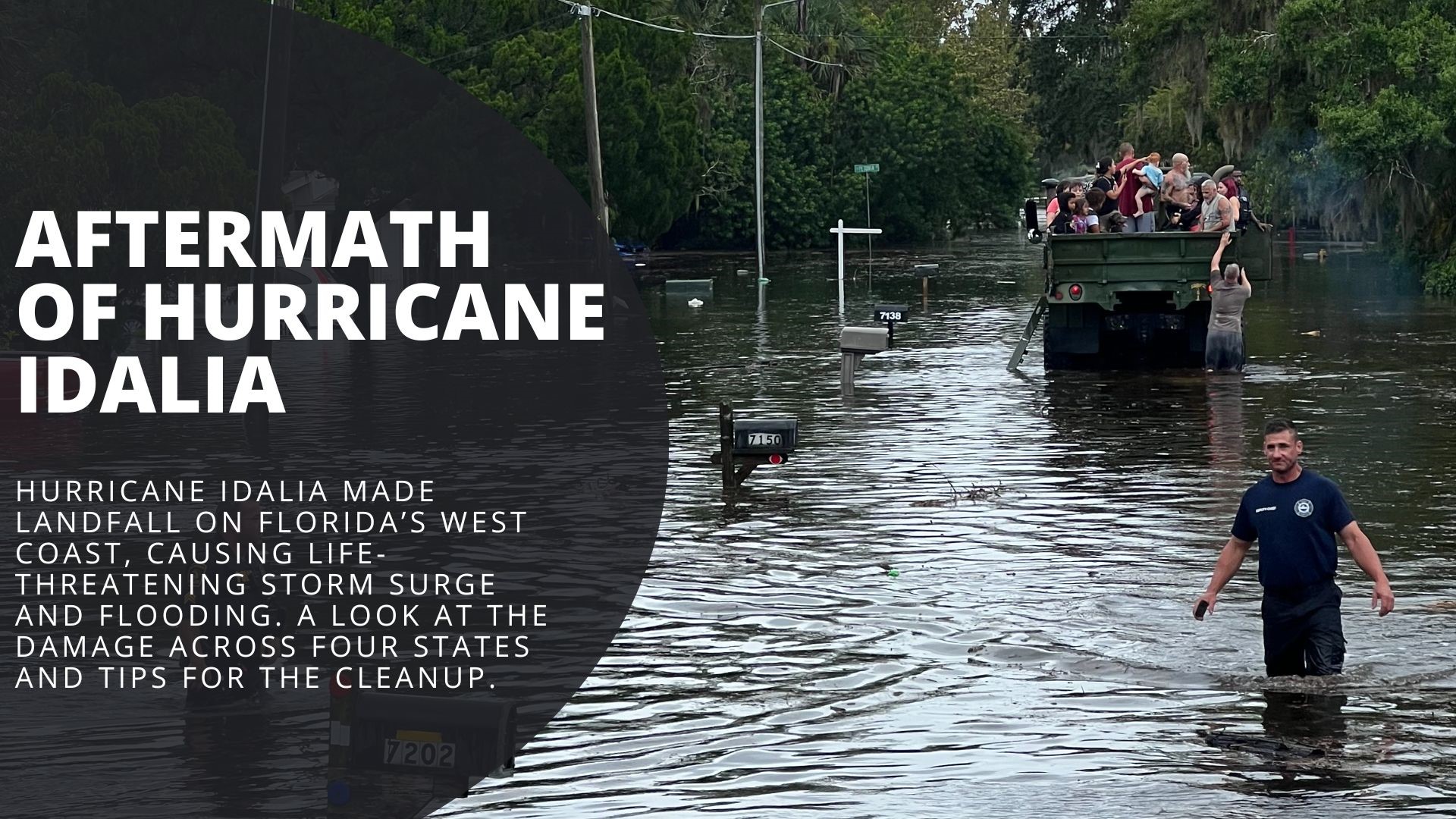WILMINGTON, N.C. — Tropical Storm Idalia caused at least five tornadoes across the Carolinas Wednesday, the National Weather Service has found.
Idalia, which brought heavy rain, flooding, and storm surge to both North Carolina and South Carolina, also had isolated tornadic thunderstorms. On Thursday, a day after the storm, meteorologists from the National Weather Service examined storm damage to determine the strength of the possible tornadoes.
Along Myrtle Grove Road in Wilmington, an EF1 tornado produced winds upward of 100 mph. The tornado was on the ground for a mile and a half. Along the way, it brought down numerous oak and pine trees. One of the trees fell on a storage shed. The tornado began as a waterspout before coming onshore.
Along Clarendon Plantation Road in Leland, North Carolina, meteorologists found evidence of an EF1 tornado. The short-lived tornado produced winds upward of 110 mph. The tornado toppled numerous oak and pine trees in the heavily wooded area.
In St. James, North Carolina, an EF0 tornado formed near Four Paws Veterinary Hospital along Highway 211. The tornado damaged the animal hospital along with a second building along Executive Park Boulevard. The tornado was on the ground for 0.32 miles with peak winds of 80 mph.
In North Myrtle Beach, South Carolina, an EF0 tornado with peak winds of 85 mph was confirmed. The tornado, which began as a waterspout, came ashore near Ocean Boulevard and 56th Avenue North. During the course of 1.63 miles, it sporadically caused damage to homes in the Cherry Grove area. The weather service believes there were likely other brief spin-ups in the vicinity as the waterspout came ashore.
For the latest weather alerts, download the WCNC Charlotte mobile app and enable push notifications.
On Friday, the National Weather Service confirmed a fifth tornado. This one occurred in Clarendon, South Carolina. The EF1 tornado with peak winds of 90 mph snapped several small oak trees.
The National Weather Service also visited the Sampit and Pawley's Island areas of South Carolina to determine if tornadoes occurred there. The most significant damage to this community, which is about 9 miles west of Georgetown, is a single-wide manufactured home being pushed off its foundation blocks, according to the weather service. So far, meteorologists have found storm damage evidence indicating straight-line winds from a thunderstorm. While these types of winds can also cause damage as extensive as a tornado, the nature of the debris can differ because of the direction of the damaging winds. The winds peaked at 85 mph.
RAISE YOUR WEATHER IQ: Straight-line winds vs. tornadoes
WCNC Charlotte’s Weather IQ YouTube channel gives detailed explainers from the WCNC Charlotte meteorologists to help you learn and understand weather, climate and science. Watch previous stories where you can raise your Weather IQ in the YouTube playlist below and subscribe to get updated when new videos are uploaded.

